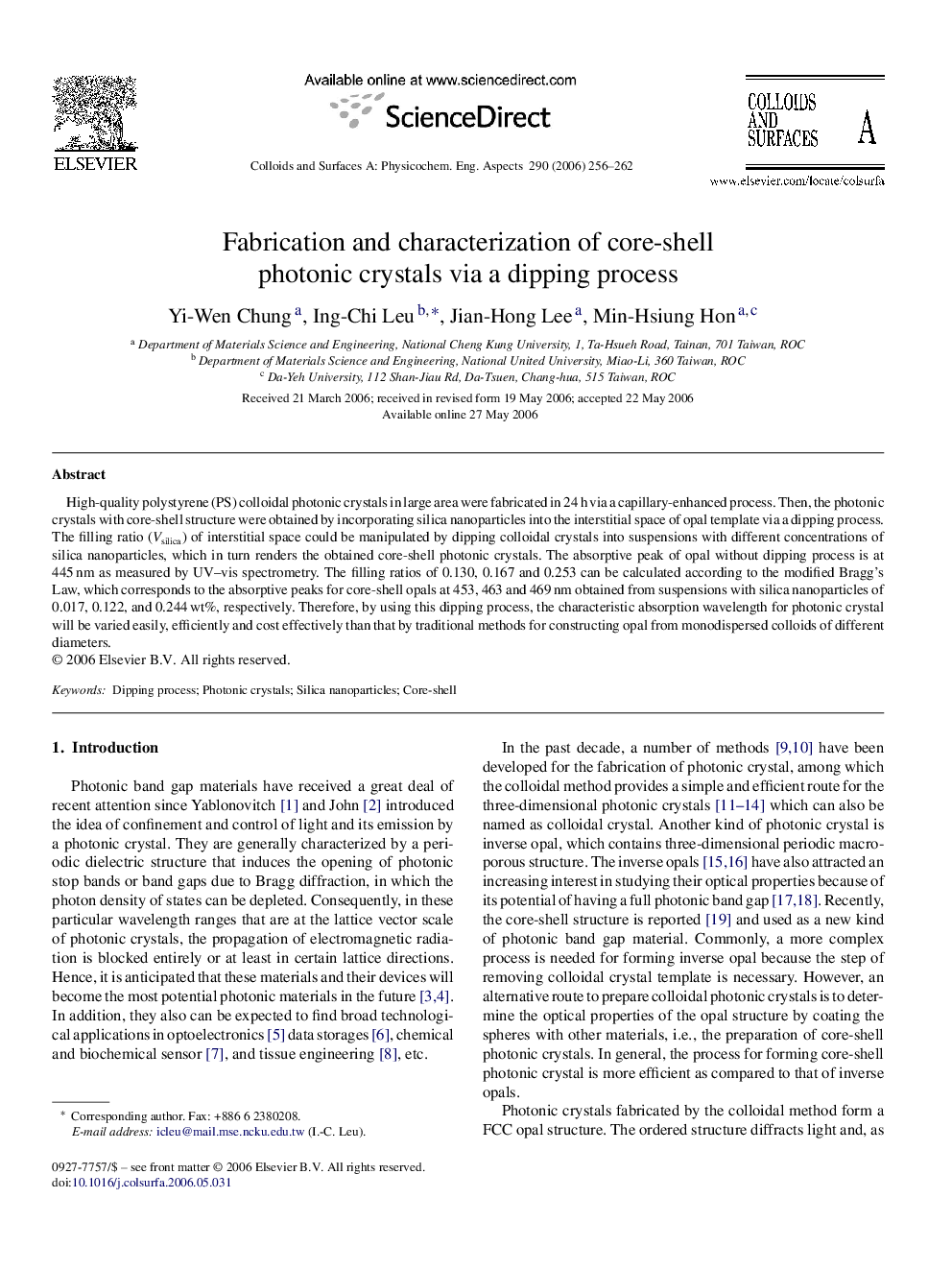| Article ID | Journal | Published Year | Pages | File Type |
|---|---|---|---|---|
| 597811 | Colloids and Surfaces A: Physicochemical and Engineering Aspects | 2006 | 7 Pages |
High-quality polystyrene (PS) colloidal photonic crystals in large area were fabricated in 24 h via a capillary-enhanced process. Then, the photonic crystals with core-shell structure were obtained by incorporating silica nanoparticles into the interstitial space of opal template via a dipping process. The filling ratio (Vsilica) of interstitial space could be manipulated by dipping colloidal crystals into suspensions with different concentrations of silica nanoparticles, which in turn renders the obtained core-shell photonic crystals. The absorptive peak of opal without dipping process is at 445 nm as measured by UV–vis spectrometry. The filling ratios of 0.130, 0.167 and 0.253 can be calculated according to the modified Bragg's Law, which corresponds to the absorptive peaks for core-shell opals at 453, 463 and 469 nm obtained from suspensions with silica nanoparticles of 0.017, 0.122, and 0.244 wt%, respectively. Therefore, by using this dipping process, the characteristic absorption wavelength for photonic crystal will be varied easily, efficiently and cost effectively than that by traditional methods for constructing opal from monodispersed colloids of different diameters.
